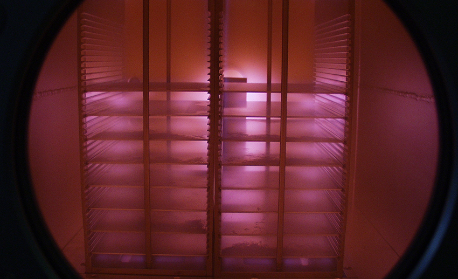
Microscopic contaminations not visible to the naked eye are found on all surfaces. Almost always, these contaminants must be removed as a first step to producing faultless adhesion between surfaces when working in the application of glueing, printing, painting, bonding, or coating. For this surface treatment, low pressure plasma is the best choice and plasma systems from Thierry Corp. fulfill every cleaning need you might have.
Plasma cleaning technology offers solutions for any type of contamination, for any substrate. In the cleaning process, molecular level contamination residues are removed from a surface by a dry method of turning the foreign materials into a gas. This process of changing the state of a solid or smearable liquid into a gas without exposing the part to a liquid is preferred over standard cleaning methods.
With a plasma cleaner there are virtually no limitations for materials that can be treated. Polymers (solid or fibers), metals, rubbers, ceramics and glass are equally suitable for plasma cleaning. It is safer, environmentally friendly, and more effective than traditional wet chemical cleaning procedures. Plasma cleaning also works at atmospheric or low pressure, depending on your process. This means that plasma cleaning systems can easily be integrated into existing processing lines.
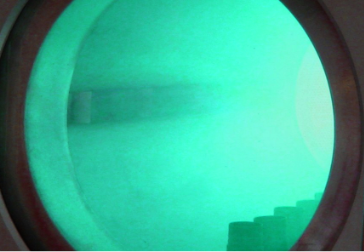
Oxygen (O2) plasma reacts with carbon and hydrogen molecules in a hydrocarbon based foreign contaminant on the surface of the part. This contaminate is changed into a gas state and removed from the workpiece without the application of a fluid. Besides directly acting on the contaminants on the surface, oxygen plasma also contains reactive species like ozone or oxygen radicals that are chemically very reactive and react quickly with other unwanted atoms or molecules on surfaces. Additionally oxygen plasma emits energetic UV radiation, which can break up chemical bonds of many polymers or other hydrocarbons. Thus, surface cleaning with oxygen plasma is an exceptionally viable tool in a large variety of industries.
Hydrogen Plasma (H2) is a powerful reducing agent. Hydrogen plasma is used to clean or reduce oxides from the surface of metals or bulk oxide films. This form of surface treatment has the big advantage that the plasma can be kept near room temperature, which makes the cleaning of heat-sensitive materials possible. Most products that are formed by hydrogen plasma and the impurities, like H2O or HCl are gaseous and can be easily evacuated from the process chamber.
Unlike oxygen and hydrogen, argon (Ar) is not chemically reactive, but the comparatively heavy argon ions generated in the plasma system have a lot of energy and exercise a micro-sandblast effect where they hit the surface. This will plasma clean and activate it for subsequent production steps. Argon plasma alone or in combination with other gases can speed up other manufacturing processes. Since the main cleaning mechanism in argon plasma is heavy ion bombardment, this technology has also the positive effect of roughening your surface up on the atomic level, which enhances the adhesion if some form of coating has to be applied after the cleaning process.
While in former times the most common plasma cleaning technologies were based on low pressure plasma with high frequency plasma sources (mostly in the kHz to MHz range). The advantage of low pressure plasma cleaning is that it is very precise and can be administered over large areas. It also offers the benefit that the desorbed contaminants from the cleaned surface can be readily pumped out of the process chamber, which makes the whole process very clean. However, this comes at the cost that vacuum equipment is needed and the integration into existing processes is not that easy.
The good news is that in recent years there have been a lot of advances in the field of atmospheric pressure plasma cleaning, which complements low pressure processes. Plasma at ambient pressure is commonly created from argon or helium with admixtures of oxygen or hydrogen. Such gas mixtures allow a very rapid cleaning process but at relatively low surface areas (compared to low pressure plasma).
Nevertheless, there is no need for vacuum equipment and, thus, plasma cleaning systems at atmospheric pressure can be integrated easily in existing production lines. Since most of these plasma sources are plasma jets, it is possible to combine several of those jets to treat a larger surface at the same time. This, eliminates the aforementioned disadvantage to some extend.
Plasma cleaning is applied to the application of surface preparation prior to the application of a sealant, adhesive or coating. The ability to do this in an environmentally friendly, high volume, low task time process.
Plasma cleaning is used to produce ultra-clean surfaces in propellant and oxidizer valving, pumping and other hardware prior to assembly. The ultra-clean process capability is used extensively in Aerospace applications.
These are very new fields in which plasma cleaning is employed. Plasma cleaning is hereby used to remove incrustations or unwanted patina layers from antiques or archaeological findings. This is mostly done with mixtures of argon and hydrogen that can achieve relatively low temperatures and, thus, doesn’t damage the fragile surfaces.
Plasma cleaning and activation is applied to the preparation of polymer and composite components prior to adhesive application to improve bond strength. It is also used for obtaining decorative surfaces since plasma can polish surfaces down to the atomic or molecular level.
Plasma cleaning is employed to reduce oxides, clean and degrease metal surfaces prior to bonding, soldering, circuit printing, or conformal coating. This surface treatment is especially advantageous because the structures on microchips are getting smaller and smaller – down to the nanometre size. Such fragile surface morphologies can get easily damaged by conventional cleaning methods but plasma treats them gently.
Medical product manufacturing requires the highest levels of surface cleaning and activation. Plasma processing provides the ability to produce an ultra-clean surface. This ability to create an ultra-clean surface can clean materials on a molecular level, removing contamination; other cleaning methods have no chance of removing. Trace level contaminants in the micro-structures or fine cracks of a surface are removed, providing a clean surface free of foreign material, contamination and pyrogens.
When it comes to high-tech optical components plasma cleaning is a powerful tool. It is often used for cleaning mirrors, lenses or other optical components, especially in the field of high power laser applications or telescopes.
Plasma cleaning and activation is applied to wafers, bond pads and lead frames to promote adhesion and improve reliability of secondary processes.
Plasma cleaning is used to clean bond pads and conductive materials for improved conductivity and reliability of device and package electrical connections.
Plasma cleaning and activation is used to remove manufacturing contamination from textiles to improve coating durability and performance life.
Removal of mold release and lubricants prior to glueing or bonding.
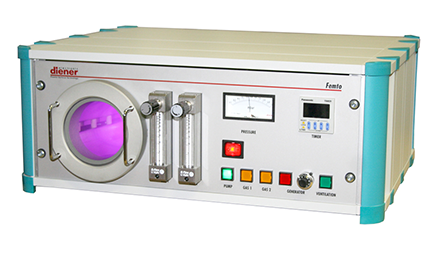
Control Cabinet:
W 310 mm H 330 mm D 420 mm
Chamber:
Ø 3.9 in, L 10.9 in
Chamber Volume:
2
Gas Supply:
2 gas channel via needle valve
Generator:
1 pc. with 40 kHz
(optional: 13.56 MHz or 2.45 GHz)
Control:
Semi-Automatic
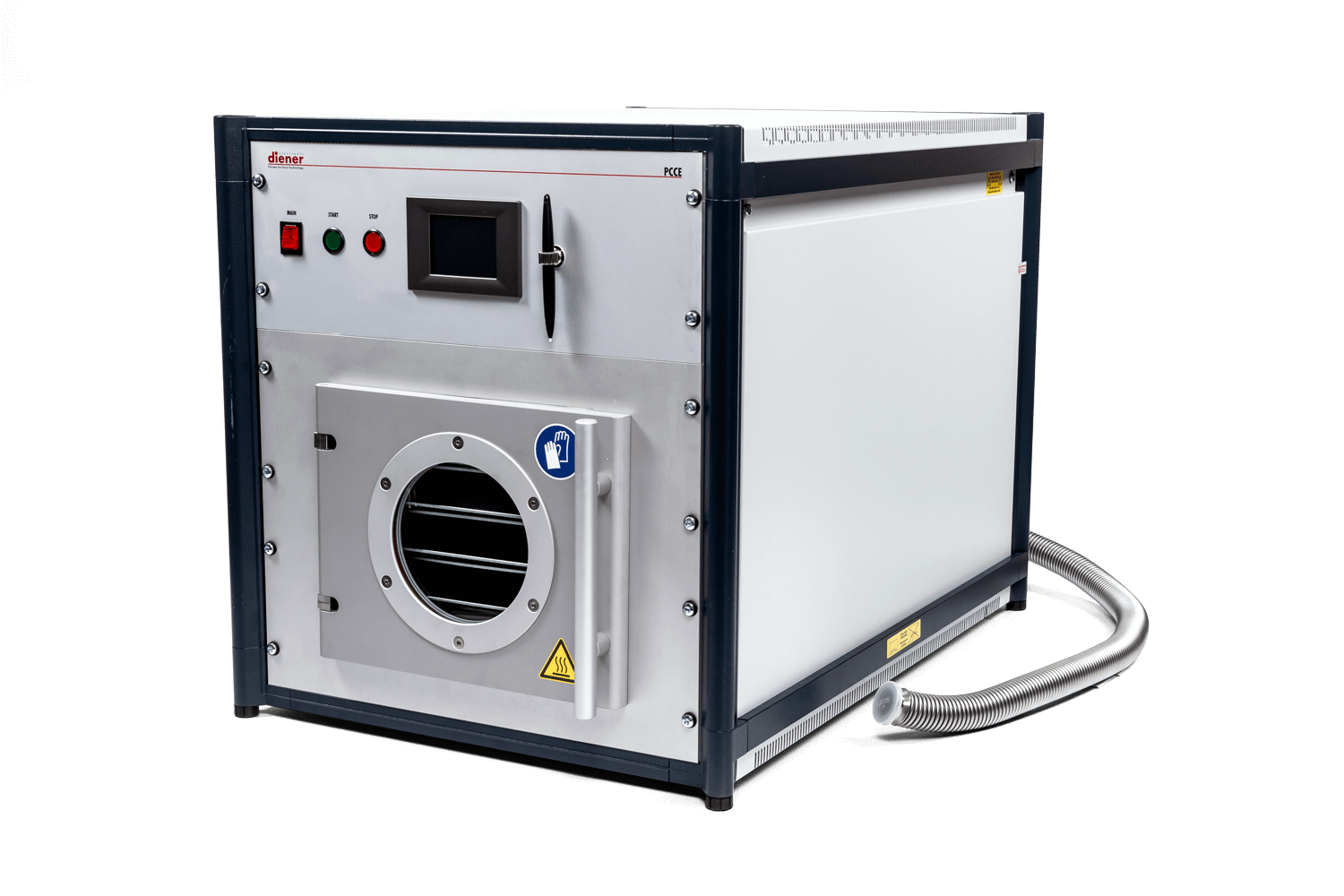
Control Cabinet:
W 560 mm H 600 mm D 600 mm
Chamber:
Ø 10.5 in, L 16.5 in
Chamber Volume:
24
Gas Supply:
Mass flow controllers
Generator:
1 pc. with 40 kHz
(optional: 13.56 MHz or 2.45 GHz)
Control:
Touch Screen
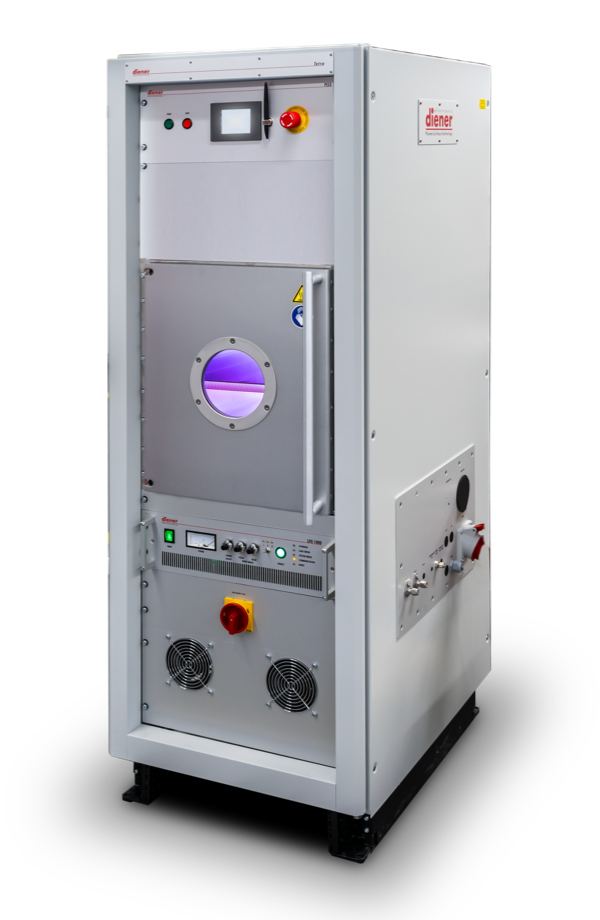
Control Cabinet:
W 600 mm H 1700 mm D 800 mm
Chamber:
W 15.8" x H 15.8" x D 24.6"
Chamber Volume:
100
Gas Supply:
Mass flow controllers
Generator:
1 pc. with 40 kHz
(optional: 13.56 MHz or 2.45 GHz)
Control:
Touch Screen
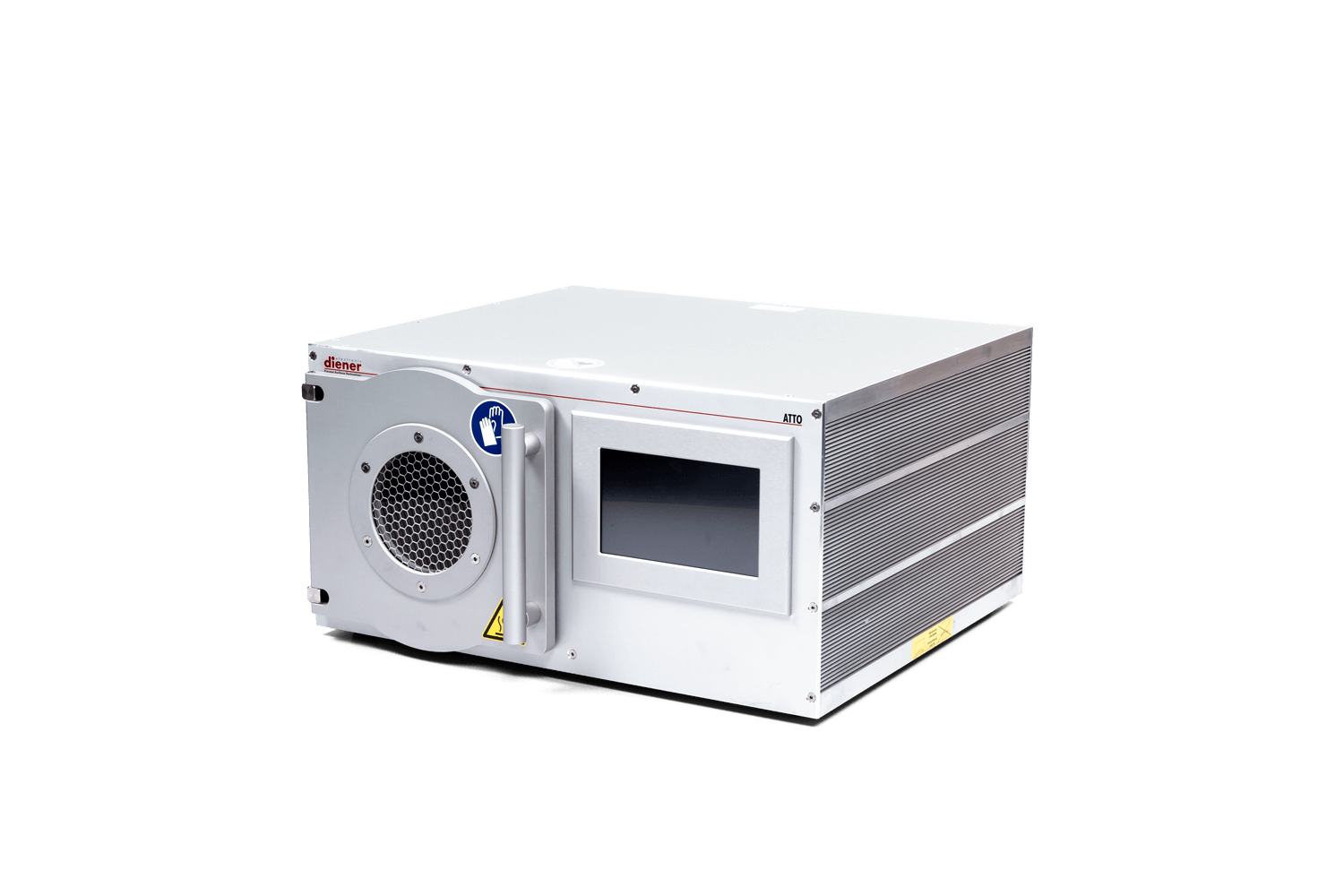
Control Cabinet:
W 425 mm H 275 mm D 450 mm
Chamber:
Ø 8.3 in, L 11.8 in
Chamber Volume:
10.5
Gas Supply:
Mass flow controllers
Generator:
1 pc. with 40 kHz
(optional: 13.56 MHz)
Control:
Touch Screen
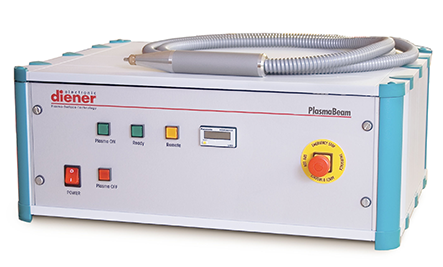
Control Cabinet:
W 562 mm H 211 mm D 450 mm
Generator:
1 pc. with 40 kHz
Control:
Semi-Automatic
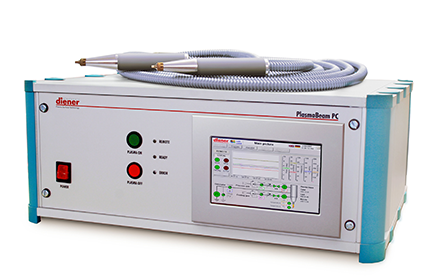
Control Cabinet:
W 562 mm H 360 mm D 650 mm
Generator:
1 pc. with 40 kHz
Control:
PC